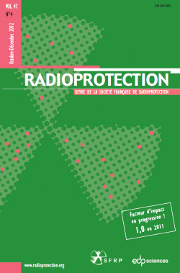Article contents
Assessing emergency situations and their aftermath in urban areas: The EMRAS II Urban Areas Working Group
Published online by Cambridge University Press: 09 January 2012
Abstract
The Urban Areas Working Group is part of the International Atomic Energy Agency’s EMRAS II (Environmental Modelling for Radiation Safety) Programme. The goal of this Working Group is to test and improve the capabilities of models used in assessment of radioactive contamination in urban settings, including dispersion and deposition events, short- and long-term contaminant redistribution following deposition events, and potential countermeasures or remediation efforts for reducing human exposures and doses. The Working Group has developed three modeling exercises, which are designed to permit intercomparison of model predictions and, in one case, comparison of model predictions with measurements. This paper describes the scenarios and provides comparisons of initial modeling results. Reasons for similarities and discrepancies among model predictions are discussed in terms of the modeling approaches, models, and parameter values used by different assessors. Preliminary conclusions emphasize the value of explaining individual approaches and the importance of understanding the effects of different assumptions and parameter values on the modeling results.
- Type
- Research Article
- Information
- Copyright
- © Owned by the authors, published by EDP Sciences, 2011
References
- 2
- Cited by


